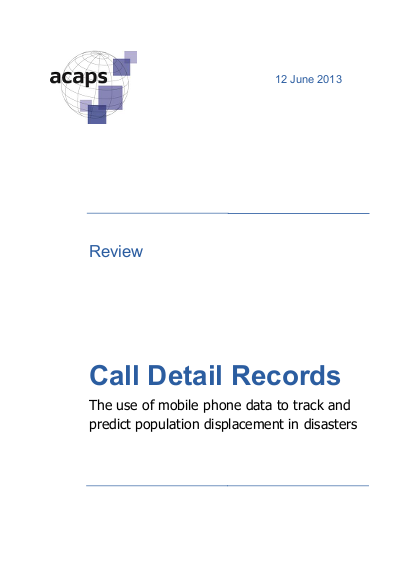
Information about the displacement of people after disasters is crucial in determining the scale and impact of the emergency, and is vital for conducting humanitarian needs assessment on the ground. Methods to forecast or detect such migration are however very limited at present.
The use of geo-referenced mobile phone call data to understand post-disaster movements of affected people has been demonstrated in two studies, in the aftermath of the Haiti (2010) and Christchurch, New Zealand (2011) earthquakes. These studies, matched against aid agencies’ recurring information needs in disaster response operations, suggest that this type of data has potential to be a useful new method to forecast and locate people who have been displaced and therefore in need.
The Haiti and New Zealand studies showed that pre-disaster mobile phone usage patterns are highly predictive of where people will move when displaced by an emergency. Analysis of basic mobile call records (known as CDRs) is a practical method for inferring these migrations, to a useful degree of accuracy. The acceleration of mobile phone usage in developing countries should enable the practical use of call data in this way in many disaster incidents; however they have not yet been used as such since 2011. This is because, probably, the methods require substantial technical resources and, crucially, ready access to call data sets from mobile network operators: such cooperation is costly in time and effort and there are a number of institutional obstacles to be overcome, notably involving gaining access to the data, before data can be shared and used as envisaged.